Most people find it hard to tell apart a great tit vs. coal tit at first glance. Great tits and coal tits share many similarities in habitat and behavior, leading to confusion. But if you know their subtle differences, you can identify them correctly each time.
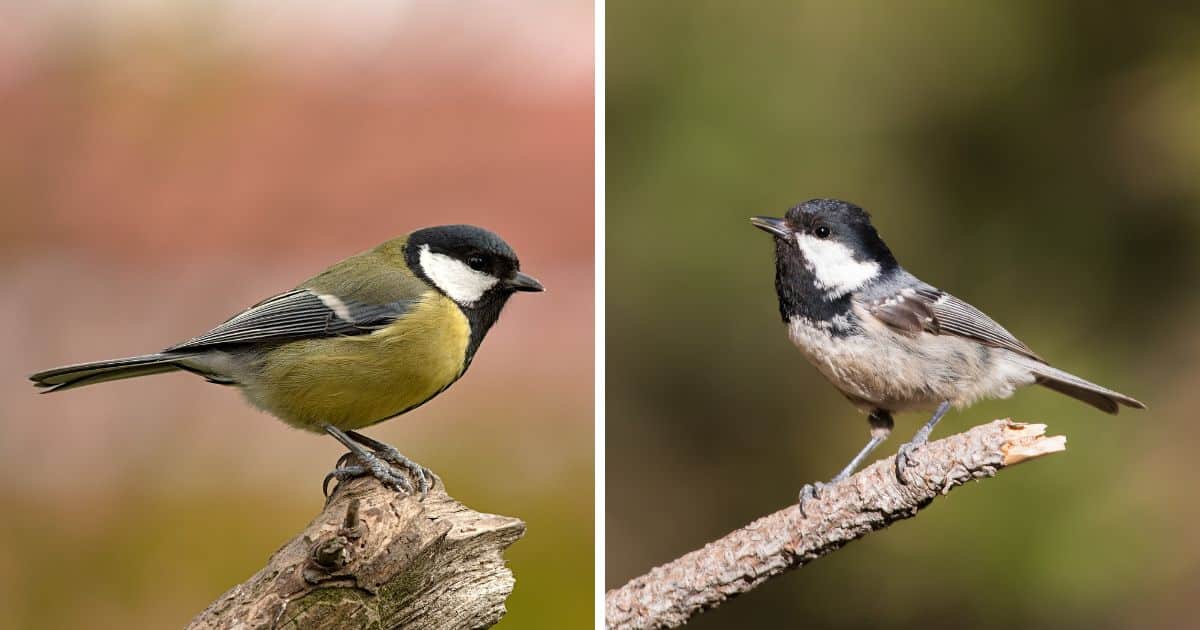
Their appearance and size are often the first visible distinguishing factor, with the great tit being the largest of all tit species. But there are other differences, including their plumage colors, nesting habits, and feeding patterns.
Let’s have a look at these differences.
Contents
Appearance
The first thing you’ll notice when comparing the great tit vs. coal tit is their appearance. The great tit’s head and neck are black with white cheeks.
They also have a black stripe running down the bird’s center. The sides of the great tit’s abdomen are yellow, while the rump is olive-green.
The coal tit, on the other hand, has a black head with white cheeks. They also have a small white patch at the back of the head.
The rump of the coal tit is primarily gray, while the underparts are a light-brownish yellow. Younger coal tits have yellow cheeks.
Size
The great tit is considered a large bird in the tit family. It has a length of 12.5-14cm, unlike the coal tit, which measures 10-11.5 cm. Great tits have a wingspan of 24 cm, while the average wingspan of a coal tit is 19 cm.
In terms of weight, the great tit is heavier than the coal tit at about 18 g and 9 g, respectively. The great tit also has a longer tail compared to the coal tit.
Habitat
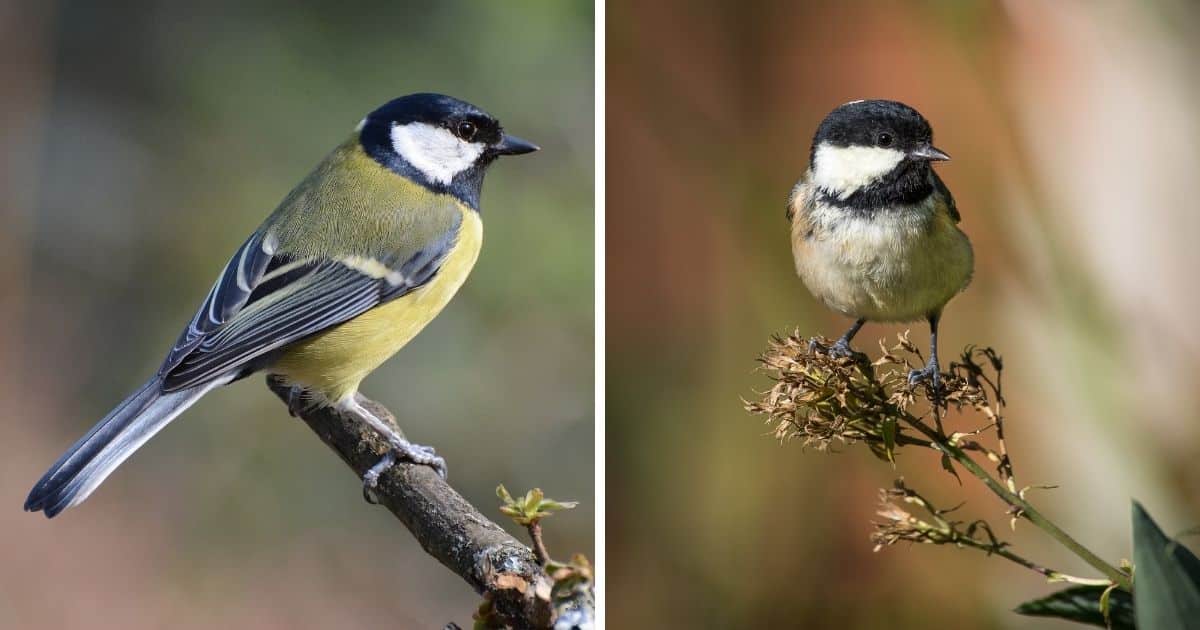
You can find the great tit across various habitats, including mixed forests, gardens, deciduous woodlands, scrublands, and forest clearings of coniferous or dense woods. They also occupy the boreal taiga of Siberia, the riverine willows of China, and birch forests.
Coal tits are commonly found in coniferous woodlands but have also adapted to living in gardens and parks with conifer trees. They may join other tit species during winter to forage in the woods.
Nesting
Great tits are highly adaptable in their nesting habits. They will build nests in woodlands, holes in walls and trees, and abandoned nests from other species.
Their nesting place used to be woodlands, but the declining coverage of mature woodlands means the great tit has had to adjust in nesting preferences.
Today, they will nest in natural spaces and artificial structures, including bird boxes, letter boxes, air ducts, and pipes.
Coal tits will often nest in coniferous woodlands where they feel safe. You may also find them in holes in deciduous trees, walls, or in the ground.
In rare cases, they may nest in garden nesting boxes, especially if larger birds such as the blue and great tits have not occupied the nests.
The females are responsible for building the nest, which she layers with space moss, spider webs, wood, hair, and feathers.
Breeding
The great tit and the coal tit have an overlapping breeding season starting in March. However, the breeding season for the great tit is shorter, ending in May, while the breeding season of the coal tit ends in July.
Great tits begin establishing their breeding territories in late January, laying the defensive positions in early spring in readiness for the breeding season.
They will maintain the breeding territory in successive years, only changing it after a predator attack.
Great tits often form monogamous relationships with their partners, but if they separate, the females move away to establish a new breeding territory with another male.
During the breeding season, the great tit lays between six to eleven eggs, while the coal tit lays between 5-13 eggs.
Their young ones hatch blind and without feathers. Great tits and coal tits will feed the hatchlings until they are independent enough to forage.
Vocalization
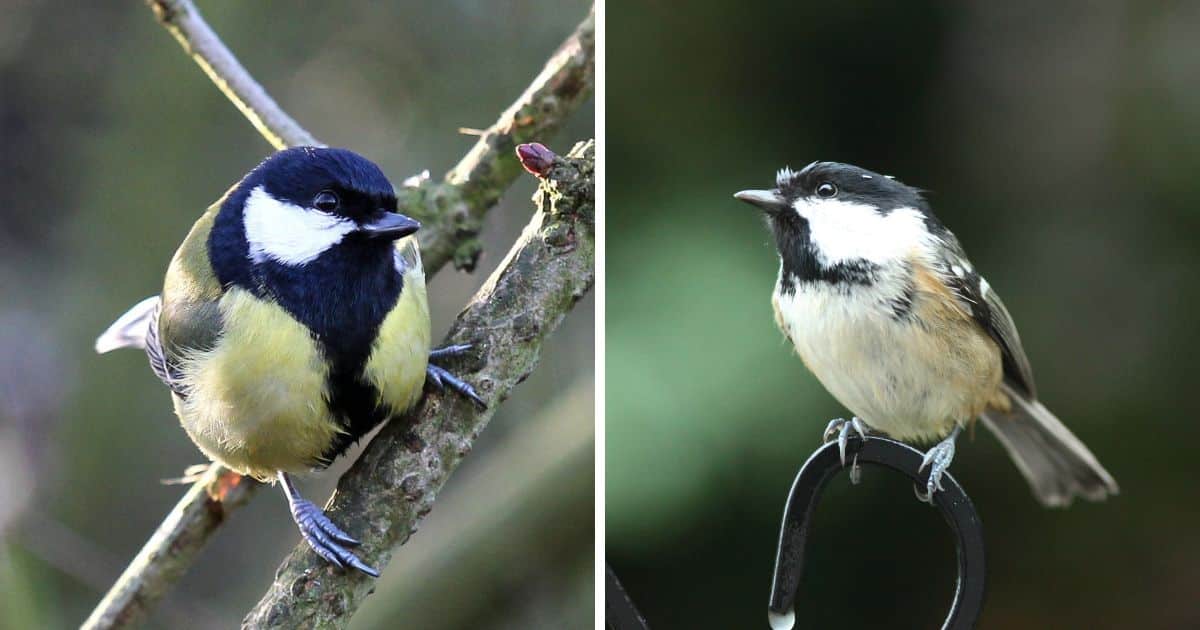
Tits are vocal birds. But when comparing the great tit vs. coal tit, the former is more vocal. The great tit has more than 40 different calls and songs.
The variety in call songs gives great tits a tremendous biological advantage. The vocals give the impression that they have a dense population.
Male great tits are usually more vocal than female tits. Male great tits make these calls to sound an alarm or declare ownership of a territory.
Coal tits are less vocal than the great tit, but their vocalizations range from high-pitched to fast-paced notes. Their call songs are similar to those of great tits but are higher pitched and faster.
Dietary Habits
The dietary habits of the great tit evolve depending on the season. During the summer, great teats primarily eat insects and spiders.
They also feed on grasshoppers, crickets, bugs, ants, beetles, bees, snails, cockroaches, and other invertebrates.
During breeding, the great tit seeks protein-rich food, mostly caterpillars, to feed their chicks. With the food scarcity in winter, great tits alter their diet to include seeds, berries of shrubs, and deciduous trees.
Some subspecies of the great tit also prey on hibernating pipistrelle bats during harsh winters or severe food shortages.
Like the great tit, coal tits are primarily insectivorous. They will eat insects and spiders for most of the year, but in winter, their diet also includes seeds of coniferous trees.
They cache their food after foraging and place the caches in different locations. When eating, you’ll observe them moving back and forth to the feeding spot to carry more food. Thanks to their tiny beaks, they can only take a little food at a time.
Behavior
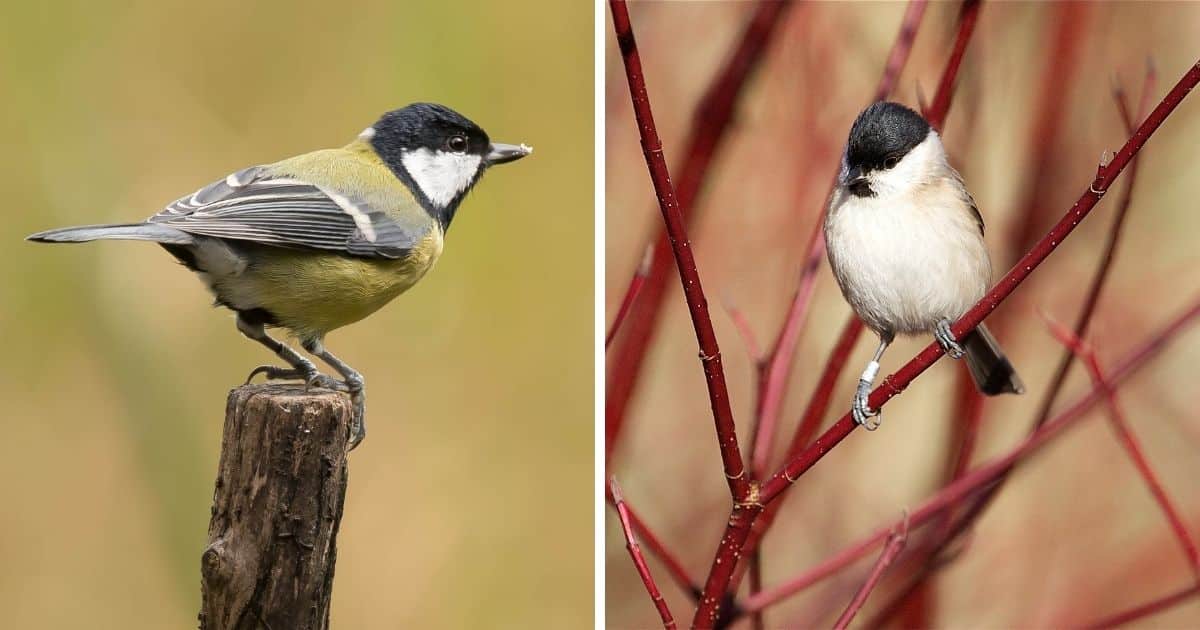
You can distinguish the great tit from the coal tit through behavior. Great tits are often aggressive and dominant due to their large size.
They are not afraid of attacking other birds and can go as far as killing hibernating pipistrelle bats when the food supply dwindles in the winter.
When great tits interact with other birds, especially in feeding areas, they use aggression to get more food and sometimes evict birds from their nesting sites.
Coal tits, in contrast, are docile and shy, especially at bird feeders, often leaving when another bird arrives at a feeding point.
Migration Habits
Generally, there’s no significant difference in the migratory behavior of the great tit vs. coal tits. Both are not migratory birds and will remain in or near their territories all year round. They may move when the weather becomes too harsh.
Like great tits, coal tits remain in their habitats throughout the year. However, the Siberian coal tits will move regularly. Historically, subspecies of coal tits have migrated over long distances, but this is rare.
Relationship With Humans
Great tits are common in human habitats, including parks and gardens. Thanks to their feeding habits, they provide a natural pest eradication measure in the places they feed. Great tits are generally not afraid of humans and will adapt to human-made ecosystems.
Unlike great tits, you won’t find a lot of coal tits interacting with people. However, they may interact with artificial structures such as bird boxes and bird tables, but they’ll often fly away when approached.
Lifespan
The great tit has a lifespan of about three years, with the longest-living great tit having lived for thirteen years and eleven months.
On the other hand, the coal tit has an average lifespan of two years. The longest recorded coal tit lived for nine years, eight months.
Summary
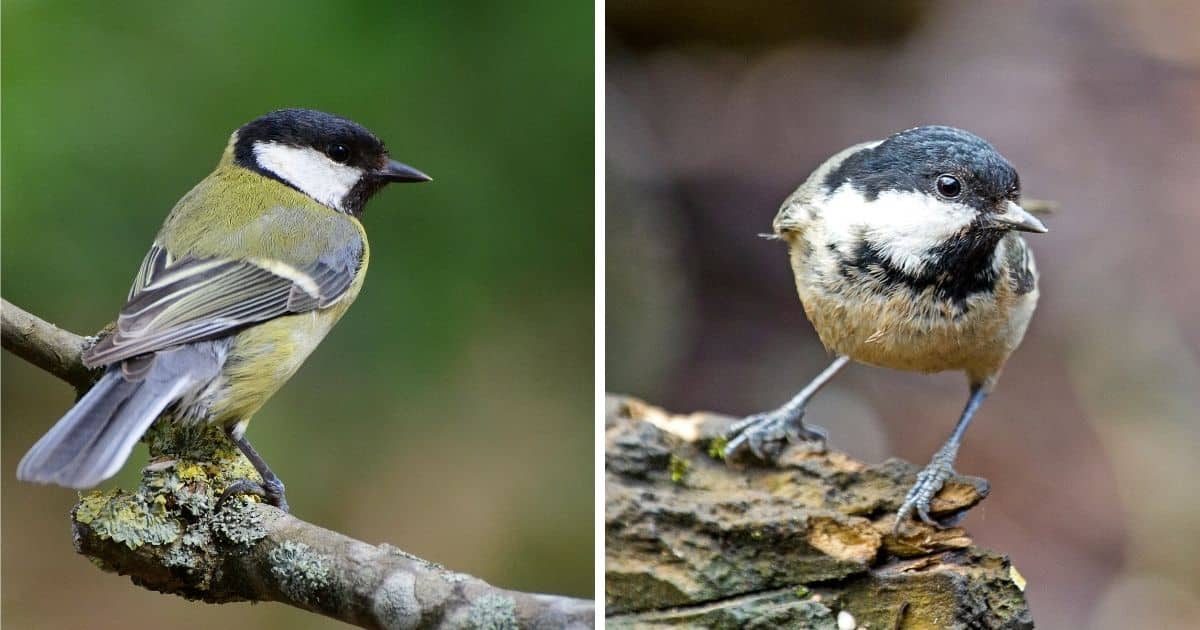
The great tit and the coal tit share several similarities, but they have differences that set them apart. Once you understand these differences, you can quickly identify them based on their plumage color and size.
